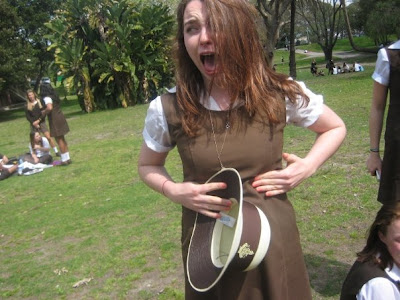Putting stripes onto a business shirt in photoshop.
Get rid of white out of DDS - get rid of background.
SO - DDS has to be perfectly joined.
Contiguous off (on the top bar - un tick little box), use magic wand and remove all sections of white.
Duplicate this Original DDS layer
Name it Outline Shirt black.
Then - we need to get rid of pleats, stitching, etc - we only want the outline.
use erase tool and marquee tool and delete large areas. This includes - buttons, front button fasten. And so forth.
We are left with something bare and plain - only outline.
New layer - test fabric
Turn outline off for the moment.
Need to create a stripe - ise paint tool, paint whole background a certain colour eg pink.
Create rectangles using marquee tool and make rectangles - fill those with colours.
Create stripes.
Open rulers - view --> rulers - work out where the stripe is repeating. Make sure stripes are even.
Select space of 2 stripes
edit -->define pattern - name pattern. Do a test fill - select an area - fill-->pattern we have defined.
Turn this layer off
Create new layer - Fabric.
Re-arrange layers - ove test fabric and original DDS to the bottom.
Select fabric layer - select whole space, fill with pattern.
Change scale - free transform
Command T to select the whole thing
Go to top bar where there are percentages - type in 55 and 55 to make it smaller.
We still want to fill the whole page - so copy and paste to fill.
Black arrow, hover over stripe, click alt key - has a white arrow behind. This will copy.
Alt --> Shift - get mouse and pull stripe - you have a copy.
Make sure that these match up EXACTLY - zoom in a lot.
These are now 2 layers - merge layers - in layer menu.
Continue this process until it is small enough.
Now we have our fabric - duplicate layer a lot - you can only use the layer once - try maybe 10 duplicate layers.
Pull one of these to the bottom - turn it off, don't touch it! Just in case you haven't duplicated enough of the the fabric layers.
Turn all of the extra layers off, keep one fabric layer on - work from the top down. Outline is always the top layer.
Get magic wands - contigiuous on - use shift key so you can select front of back.
Go to fabric layer - selection stays there.
Use invert to cut out only the pattern for the first bits.
For the other bits use free transform to get the stripes at the angle you want - do yokes etc one by one.
Cut out a small area - has to be big enough to fit in yoke when it's pulled.
Go back to shirt outline - select bits we did with magic wands then invert.
Do sleeves, use free transform etc.
For collar warp (!!!!) - yaaaaaaay.
Keep up with the changing layers, cutting transforming etc until it is all going the right way.
Unselect the outline - odd little gaps where the outline used to be. Go back to outline - use magic wand to select the outside of the shirts on your last fabric layer - select --> inverse--> delete - this then gives a background of the shape of the shirts, so we have no funny little gaps.
Do not merge things!!!!!! You might want to change. Keep this as a working file.
Then.... back to original DDS - take this to the top and turn it on - and your shirt is done woot woot!
If you are using a black fabric make the outline white or grey - the outline layer is only ever for your own access - so it's not too important.






 In general - make it look right.
In general - make it look right.

 I am quite happy that this week is so very close to over - image from http://detourthroughwonderland.blogspot.com
I am quite happy that this week is so very close to over - image from http://detourthroughwonderland.blogspot.com
 The lesson you should take from this photo - stacks on are rarely a good idea. I think that broke my rib.
The lesson you should take from this photo - stacks on are rarely a good idea. I think that broke my rib. A very blurry picture - my baby sister hovering over my mother's head, but I love the colours of this. Not entirely relevant, I know, but I'm feeling like this - momentarily extremely happy because I just finished board mounting! Huzzah! Fleurtinis all round!
A very blurry picture - my baby sister hovering over my mother's head, but I love the colours of this. Not entirely relevant, I know, but I'm feeling like this - momentarily extremely happy because I just finished board mounting! Huzzah! Fleurtinis all round!